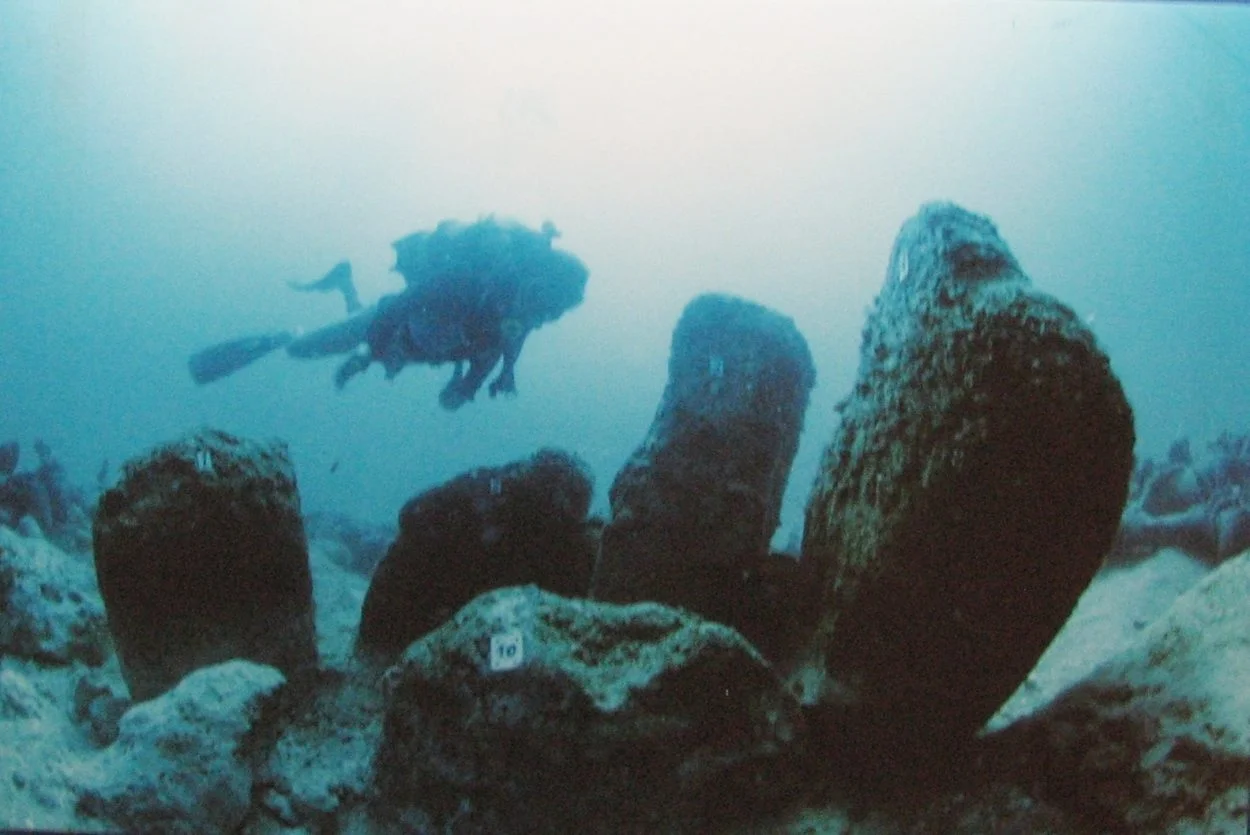Atlit Yam is a submerged Neolithic settlement, located off the Atlit coast in present-day Israel.
During the beginning of the Holocene, tectonic tilting and climatic changes led to swamps along the Israeli coastal plain to dry up. The reclaimed land in the retreating shoreline was settled by Neolithic peoples from the Pre-Pottery Neolithic (PPNB), and the later Pottery Neolithic Period, until a eustatic rise of the ocean’s sea levels submerged the ancient settlements to a depth of 8-12 metres beneath the surface.
Atlit Yam was settled around 6900 BC, with the inhabitants surviving on an agro-pastoral-marine subsistence. The reclaimed land was highly fertile and was used for growing wheat, and a sandstone ridge east of the village was probably covered by vegetation, with suitable pasturage for domesticated as well as wild animals.
The villagers constructed several rectangular shaped structures typical of the PPNB period, with external linear walls that may have served as animals pens, or to partition areas between cultivated fields.

Surveys of the site, in addition to material excavated from the structures has shown large concentrations of flint, originating from Mount Carmel over 10 kilometres away. In one assemblage alone, over 8755 flint artefacts have been recovered, whilst across the site numerous arrowheads, sickle blades, bifaces, spearheads, and bifacially flaked knives has been excavated.
The villagers dug a deep well to depths of 10.5 metres through layers of clay and soft sandstone, that was lined with stone courses and capped with a tumulus-like circular construction. Within the build-up of marine sediment inside the well, underwater archaeologists found hundreds of thermally fractured limestone pebbles, animal bones, stone tools, waterlogged and carbonised plant remains, and several fragments of human bone.

Close to or within the structures, 15 human skeletons have been discovered, mostly in single graves either relatively intact, or only a few bone fragments, all of which show varying degrees of hypoplasia.
Atlit Yam appears to be a one-phase settlement, representing a short period of occupation before the encroachment of the sea that led to Atlit Yam being abandoned around 6300 BC.
Header Image Credit : Hanay – CC BY-SA 3.0





